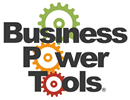How to Develop an Effective Public Relations Message
The first steps in gaining publicity are to define your goals, and to decide how you want your products and company to be perceived.
The text and worksheets in this chapter will help you get started on creating a successful promotional publicity campaign.
The Value of Publicity
Publicity is the most cost-effective marketing tool in the consumer marketplace. Public relations produced a hefty 235% return on investment, according to chief economic officers across the country who were polled by the International Association of Business Communicators Research Foundation.
Results of a survey conducted by Soft-Letter, a newsletter based in Cambridge, MA that covers trends in the computer software industry, show “the software industry as a whole has come to rely heavily on public relations as a marketing tool. Especially in smaller companies, PR is likely to be a major investment area and is often viewed as a low-cost alternative to magazine advertising.” Publicity is taking on a more important role with many consumer companies selling broad based products as well.
Publicity is important because it is the only part of the marketing program that builds credibility. Many industries are blessed with innovative, yet unknown start-up companies. For these start-up companies to rise above their competitors, it’s essential that they build credibility through publicity. Credibility is the key to winning consumers’ minds, hearts and pocketbooks.
Here Are Some Examples:
o When PC Week columnist Jim Seymour praised Revolution Software’s VGA Dimmer, a software program that saves the screen from burning out, readers jammed the phone lines with orders for several weeks.
o When New York Times writer Peter Lewis wrote about Eye Relief, a large type word processor from SkiSoft Publishing Corporation, the article was syndicated to 12 newspapers in large cities, leading to orders from across the country.
o When American Express introduced their Platinum Cards, they relied only on publicity from newspaper and magazine business columnists. They received eight times the response they hoped for even though the card carried a $300 membership fee, which is more than 15 times the $18 fee charged by many other credit cards.
o When Commodore International introduced the Amiga Computer, the returned registration cards showed that 87% of the early buyers said they bought the computer-based on public relations in the form of reviews and news articles they had read. PR was far more effective than the other choices: advertising and salespersons’ suggestions. The Amiga is now a favorite in the video industry because publicity drove early sales.
Advertising, direct mail, and the advice of salespersons have long been viewed as effective ways to sell products. Public relations also commands respect because it can increase sales by supporting advertising efforts and increasing direct mail responses.
Benefits of Public Relations Compared to Advertising
Public relations differs from advertising in that advertising controls the message, while PR does not. Because of this distinction, PR creates credibility. Advertising by itself can’t create credibility. When readers see an ad, they sometimes think, “Big deal, that’s what THEY say.” Skeptical readers are more apt to believe independent authorities – reporters, columnists, reviewers or broadcasters who lend credibility to products and services in their newspaper columns, magazine reviews, and television shows. These independent authorities are influenced by public relations activities.
Public relations helps advertising by creating credibility for a product or service. For example, credibility is built when an ad quotes reviews extolling a product’s virtues or includes a package burst declaration as the “Product of the Year” according to a leading publication. Public relations helps companies win awards by creating awareness.
PR also helps direct mail sales and in-person sales by providing credible sales materials such as brochures, advertisements, fliers, and point-of-purchase displays. These collateral pieces can take the form of reprints of positive reviews, excerpts from those reviews, and testimonials from users. These exhibits go a long way toward building credibility for your company and its products.
Publicity does not exist in a corporate vacuum. The publicity department or publicity agency should coordinate activities with the marketing, advertising, direct mail, and sales departments to ensure that one consistent message is delivered to the customer. Coordination with the research and development and/or engineering departments is important to ensure the message is accurate.
